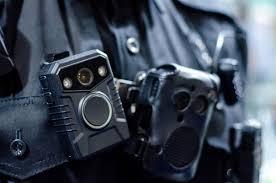Body-Worn Camera Market Insights, Demand, and Innovations | 2035

Mergers and acquisitions (M&A) have been a powerful and defining force in the body-worn camera market, serving as the primary mechanism for major players to build scale, acquire new technologies, and consolidate the competitive landscape. A strategic analysis of the most significant Body-Worn Camera Market Mergers & Acquisitions reveals a clear pattern: the creation of end-to-end public safety technology ecosystems. The M&A activity is not just about buying up competing camera manufacturers; it's a more sophisticated strategy of acquiring companies with complementary technologies—such as in-car video, license plate recognition, and command center software—to create a more comprehensive and integrated platform. The market's rapid growth and its strategic importance have provided the impetus and the capital for these transformative deals. The Body-Worn Camera Market size is projected to grow USD 4.21 Billion by 2035, exhibiting a CAGR of 16.42% during the forecast period 2025-2035. This expansion fuels a dynamic M&A environment where the industry's titans are using acquisitions as a key tool to build their vision of the future, data-driven law enforcement agency.
The most prominent example of an M&A-driven strategy is Motorola Solutions. A legacy giant in public safety communications, Motorola recognized the strategic importance of video evidence and embarked on an aggressive acquisition spree to build a formidable presence in the market and compete with Axon. Its acquisition of WatchGuard gave it a strong position in both body-worn cameras and in-car video systems. The subsequent acquisition of VaaS International, the parent company of Vigilant Solutions, added license plate recognition (LPR) technology and data analytics to its portfolio. Most significantly, its acquisition of Avigilon gave it a major foothold in fixed video security and access control. The clear strategy behind these deals was to assemble all the pieces of a "video security and analytics" ecosystem. This allows Motorola to go to a police department and offer a single, integrated solution that connects what's happening on the street (via BWCs and LPR) with the security of a building or a city's fixed camera network, all managed through a unified software platform. This M&A strategy has transformed Motorola into a true end-to-end security technology provider.
While Motorola's M&A has been focused on building out its portfolio, Axon has also used acquisitions, though in a more targeted "tuck-in" fashion, to enhance its existing platform. It has acquired companies to gain specific technological capabilities or to enter new adjacent markets. For example, it acquired companies with expertise in AI and computer vision to bolster its video redaction and analysis tools. It also acquired companies in the dispatch (CAD) and records management (RMS) space. This was a critical strategic move, allowing Axon to challenge the incumbency of players like Motorola in the command center and to offer a more complete software suite that manages an incident from the initial call to the final court case. Looking forward, M&A in the market is likely to focus on acquiring companies with advanced AI capabilities for real-time analysis, drone technology for aerial support, and potentially even virtual reality for training applications. The ongoing race to build the most comprehensive public safety platform will continue to drive a steady stream of strategic M&A activity.
Top Trending Reports -
India Intelligent Network Market
Japan Intelligent Network Market
Mexico Intelligent Network Market
- Creative Multimedia
- Education & Innovation
- Business & Technology
- Sustainability & Ethics
- App & IT Development
- Community & Culture
- Thought Leadership
- Event
- AI & Robotics
- Crafts
- Movie
- Fitness
- Free Pecks
- Games
- Tutorials
- Health
- Music
- Networking
- Other
- Business
- Religion
- Shops
- Sports
- Wellbeing



